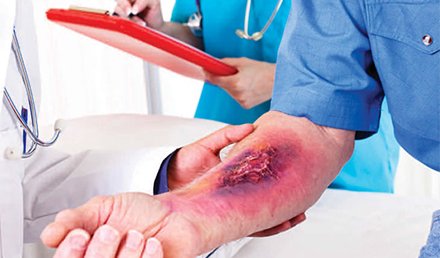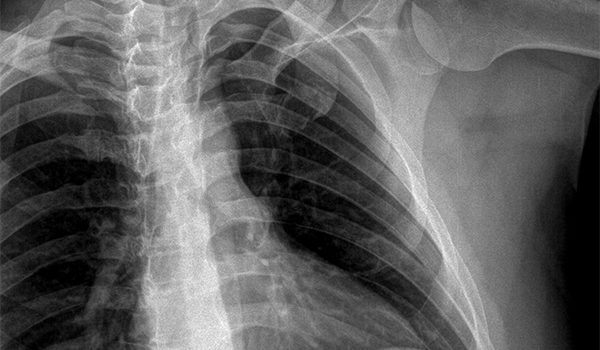DAVID STERN, MD (Practice Velocity) Q.Recently some of my charts were audited and the payor challenged the levels of the evaluation and management (E/M) codes I had used. The payor said that the charts were actually coded correctly, based on the information that was documented on the chart. The auditor, however, challenged what she called the “medical necessity” of the documentation. She claimed that, based on the patients’ chief complaints, many elements of the E/M …
Read MoreClinical Challenge: May, 2011
The patient is an otherwise healthy child, 3.5 years of age, who presents with acute pain in his right lower arm to the elbow. Examination reveals multiple fractures. View the image taken (Figure 1) and consider what your diagnosis and next steps would be. Resolution of the case is described on the next page.
Read MoreMalpractice Insurance: A Primer for Urgent Care Clinicians
JOHN SHUFELDT, MD, JD, MBA, FACEP The possibility of being sued for medical malpractice, while not a pleasant prospect, is not something that should be causing you sleepless nights. Much like flood insurance, malpractice insurance exists for times when an unexpected event occurs and may require some payment for damages. Your goal should simply be to have adequate coverage for those times. And, let’s face it, there may be such times. Good providers do get …
Read More
Enhancing Profits with Immigration Physicals
Urgent message: Conducting immigration physicals can be surprisingly lucrative. These relatively high-priced, cash-only visits incur no insurance billing or accounts receivable carrying costs. And because they are scheduled, ebbs and flows in patient volume can be leveled. Here’s how it works. Alan A. Ayers, MBA, MAcc Practice Velocity The success of a new urgent care center in a community requires a change in consumer behavior, with a sufficient number of residents shifting their utilization from …
Read More
Burns: Their Evaluation and Treatment in Urgent Care
Urgent message: Most burn injuries can be handled in an outpatient setting—if they are classified accurately, treated appropriately, and referred to a regional burn center when indicated. TRACEY QUAIL DAVIDOFF, MD A “burn” is defined as a traumatic, thermal injury to the skin and deeper structures. Some or all of the cells of the skin can be destroyed not only by heat but also by cold, chemicals, electricity, or radiation. Burns are the third-leading cause …
Read More
32-year-old patient sustains blow to chest
This 42-year-old patient suffered a blow to the chest and presents with pain but is assumed to be otherwise healthy. View the image taken and consider what your diagnosis and next steps would be.
Read MoreCase Report: A 17-year-old Boy with Pneumomediastinum
Urgent message: Although free air in the mediastinum is generally a benign, self-limited condition, most patients should be admitted to the hospital and observed for signs of serious complications, which could be fatal. By Tracey Quail Davidoff, MD A previously healthy 17-year-old male presents to urgent care with a one-week complaint of sore throat, fever, and nasal congestion. On the last day, he had experienced sharp chest pain, which worsened with deep inspiration, swallowing, and …
Read MoreClinical Challenge 2: April 2011
The patient is a 49-year-old woman who presents with a two-day history of chest pain and vomiting. The exam reveals no cause for alarm, and other than the primary complaint the patient is in no remarkable distress. However, you discover that she has had intestinal volvulus twice in the past. View the image taken (Figure 1) and consider what your diagnosis and next steps would be. Resolution of the case is described on the next …
Read MoreAbstracts in Urgent Care: April, 2011
Randomized Controlled Trial of Cephalexin Versus Clindamycin for Uncomplicated Pediatric Skin Infections Key point: When it comes to curing skin infected with MRSA (methicillin-resistant Staphylococcus aureus), timely and proper wound cleaning and draining may be more important than the choice of antibiotic. Citation: Chen AE, Carroll KC, Diener-West M, et al. Pediatrics. 2011;127(3):e573-e580. Researchers originally set out to compare the efficacy of two antibiotics commonly used to treat Staph skin infections, ran- domly giving 191 …
Read MoreMedical Histories in the Digital Age
Lee A. Resnick, MD, FAAFP “Single?” “Married”? Or, “It’s complicated?” In an era of revealing your relationship status to millions of strangers, we have grown accustomed to people sharing “TMI” about themselves. How might this affect the doctor-patient relationship of a new generation? Are younger patients more likely to share important information with their physicians, where older generations are less forthcoming? Is there a silver lining to this comfort with exposing one’s personal information for …
Read More